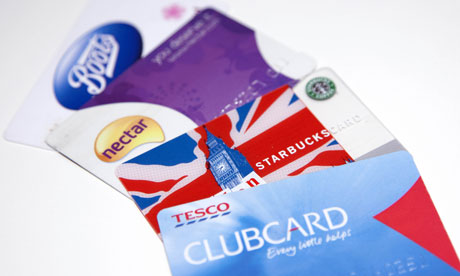 In the battleground that is retail today, retailers are turning to new (and old) strategies to win. Private label has been around for decades, but in recent times, around the world, I’ve seen a significant rise in the use of private label as a key retail strategy (check out this recent article about Target as an example). Private label is a very dangerous competitor for brands, and a tricky competitor to play against. So this post will focus on one key strategic question: what can a brand do about private label?
In the battleground that is retail today, retailers are turning to new (and old) strategies to win. Private label has been around for decades, but in recent times, around the world, I’ve seen a significant rise in the use of private label as a key retail strategy (check out this recent article about Target as an example). Private label is a very dangerous competitor for brands, and a tricky competitor to play against. So this post will focus on one key strategic question: what can a brand do about private label?
Private label has been around for a long time
Private label has been around for a very long time. Its origins lie in cheap, low quality products, focusing on commodity categories and segments. Over time that spread to cover most categories in the supermarket in some countries. Some categories succumbed completely and (almost) the entire category was taken over by private label. Other countries seemed to be able to hold off the private label invasion, or at least it seemed to have minimal penetration and impact.
Private label is evolving and advancing around the world
But over the decades private label and private label strategies have evolved. Today retailers are creating more sophisticated retail strategies. Retailers such as Tesco and Sainsbury in the UK have attempted to create premium ranges (such as Tesco Finest and Sainsbury’s Taste the difference) targeting a quality which is as good as, if not better than, the best the category has to offer.
Retailers are revisiting private label with renewed vigor
Fast forward to today and there is a renewed vigor to the development of private label. New ranges are announced by retailers seemingly daily. And markets which have historically been immune to private label are now finally succumbing. I was in Indonesia in the last month and the growth and penetration of private label there appears to be growing fast, after being almost insignificant for many years.
Private label isn’t private label anymore
Today private label often isn’t ‘private label’. Retailers create brands (or at least brand names) to create the illusion of exclusivity, and perhaps to create something that might appeal to a shopper who doesn’t want to buy private label, or a retailer whose brand name may not carry the values that make it a great private label brand. Discounters such as Aldi and Lidl are packed full of pseudo brands.
And this approach isn’t limited to the discounters. In the UK, Tesco has revamped much of its value range of low cost private label and has relaunched it as a range of 400 products, under 16 different names, all bound together under the ‘Exclusively at Tesco’ banner. In the US, Target has announced the launch of a new brand – Smartly – with contains a range of 70 personal care products.
What is driving the focus on private label?
In today’s trying times, retailers are finding things tough. New threats, from e-commerce to discounters to convenience stores; new competitors such as Amazon and Ocada are shaking up the retail world. Retailers are under pressure to keep shoppers, and to encourage them to come to their stores. Retailers are under pressure to compete on price, as technology makes pricing more transparent, and discounters and e-commerce fight the fight on pricing. At the same time profit is under pressure, driven by the pain of a price war, and the increased costs of having to fight on multiple fronts (for example opening up an e-commerce operation as well as stores).
What retail strategy can help a retailer attract shoppers, fight on price, AND increase profits?
Enter private label
Private label, in this regard, is brilliant. By definition, private label is only available in one retailer, so creates at least the veneer of exclusivity. Because of the lower costs (jettisoning the margins that a branded manufacturer demands, plus all the overheads and marketing costs that a brand requires) it is possible to simultaneously compete on price, while protecting or even growing margins.
The evolution of private label
Hence the evolution into retailer ‘brands’ – creating more differentiation and more appeal by being able to sow specific brand values into different categories and sectors – while still being able to keep costs (and therefore prices) low.
Private label will continue to advance and encroach
Retail will be tough for a long time, so we can expect retailers to keep pushing private label. Its appeal to a retailer under pressure, when executed well, is hard to resist. But what about the branded manufacturers. How to cope with the impending threat of a renewed focus on private label?
How to cope with the impending threat of a renewed focus on private label?
Accept the reality – We can complain about how unfair it might be, but private label is here, and if it isn’t it may well be coming soon. We can indulge in debates about whether private label products are parasites, feeding on the historic brand value that a brand has created. We can moan about the pack designs that get really close to the brand leader. We might even consider legal action if there is evidence of passing-off or IP infringement. But in most cases, there is little we can do.
Look at your own brand weaknesses – And (playing devil’s advocate here) if your loyal consumers and shoppers can be won over that easily, then perhaps the brand isn’t as strong as it should be. We need to beware of marketing that doesn’t really create consumer or shopper value. If a consumer or a shopper will switch to something cheaper that easily – where did our marketing go wrong?
Recognize the difference between consumers and shoppers – Too often we think of brand preference as a consumer thing, but there are shoppers involved too. And private label plays to this brilliantly. Sometimes the consumer isn’t the shopper: so the person making the purchase decision may not be totally bought into your brand, might not understand its value, and so might switch to private label. Even when the shopper is the consumer, decision processes are different. A person who portrays undying love for your brand in a focus group might suddenly become fickle under the glare of the supermarket’s lights.
Its not all about you – Of course, its easy to see this as a direct attack on your brand (or to think that somehow your category might not be affected). But remember that, as shopping and shops evolve, there may be more environments where the shopper doesn’t get to see your brand. In a discounter, for example, there may be few or no brands at all. The shopper may have been keen to buy your brand if it was there – but what if it isn’t? Will the shopper make a separate trip to another store, just for your brand? Maybe, but the price of that brand loyalty has just got higher, and for many shoppers, it might just be too easy to pick up the private label anyway.
Predict weak points and act now – Many of you may be reading this and thinking that you are immune to this. I hope that is true. But be careful. Private label is a powerful tool and retailers will use it wherever they can. Even if private label is small in your category or market, investigate. Check your brands and see which are vulnerable. Which could easily be copied as a physical product. Which have brand attributes which could easily be eroded, or replaced by price? Act now to plan a private label defense.
Develop category strategies that recognize the role of private label AND your brand – What does all this mean? Yes, we can, and should, compete with private label. But we must acknowledge that it is going to be a growing part of a retailer’s strategy. That is something that branded manufacturers need to accept. So how to create a world that makes sense of this? The answer is to develop category strategies that recognize the role that private label plays for a retailer, as well as recognizing (and amplifying) the value that your brand brings to the category and to the retailer.
Brand strategies that overtly fight private label are less likely to receive retail support. But brand manufacturers who can present their brands as something that complements, rather than fights, a retailer’s strategy, are likely to get more support.
To achieve this, of course, manufacturers need to ensure that they understand retailers and their strategies. They need to ensure that their strategy and planning processes encompass shoppers and retailers as well as consumers. Brand growth is still paramount but achieving that brand growth needs to be planned within a realistic view of the world. If you need help on building meaningful and retail-realistic growth strategies, get in touch now.



